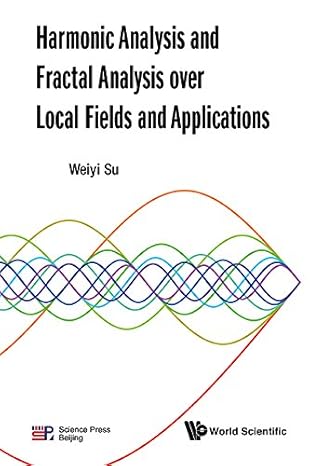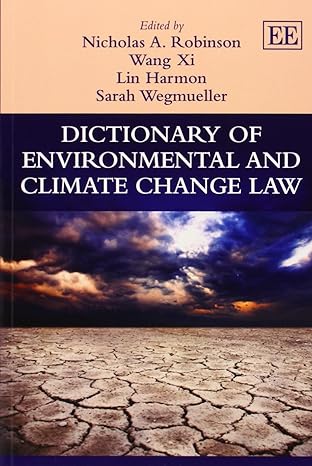Key Benefit: With an expanded focus on critical thinking and problem solving, the new Seventh Edition of Introductory Chemistry: Concepts and Critical Thinking prepares students for success in Introductory Chemistry courses. Unlike other introductory chemistry texts, all materials ―the textbook, student solutions manual, laboratory manual, instructor’s manual and test item file ― are written by the author and tightly integrated to work together most effectively. Math and problem solving are covered early in the text; Corwin builds student confidence and ability through innovative pedagogy and technology formulated to meet the needs of today’s learners. By presenting chemistry in a clear and interesting way, students to leave their first chemistry course with a positive impression, a set of new skills, and the desire to learn more.
Key Topics: Evolution of Chemistry, Modern Chemistry, Learning Chemistry, Basic Units and Symbols, Metric Conversion Factors, Metric–Metric Conversions, Metric–English Conversions, The Percent Concept,Volume by Calculation, Volume by Displacement, The Density Concept, Temperature, The Heat Concept, Physical States of Matter, Elements, Compounds, and Mixtures, Names and Symbols of the Elements, Metals, Nonmetals, and Semimetals, Compounds and Chemical Formulas, Physical and Chemical Propertie, Physical and Chemical Changes, Conservation of Mass, Potential and Kinetic Energy, Conservation of Energy, Dalton Model of the Atom, Thomson Model of the Atom, Rutherford Model of the Atom, Atomic Notation, Atomic Mass, The Wave Nature of Light, The Quantum Concept, Bohr Model of the Atom, Energy Levels and Sublevels, Electron Configuration, Quantum Mechanical Model of the Atom, Classification of Elements, The Periodic Law Concept, Groups and Periods of Elements, Periodic Trends, Properties of Elements, Blocks of Elements, Valence Electrons, Electron Dot Formulas, Ionization Energy, Ionic Charges, Classification of Compounds, Monoatomic Ions, Polyatomic Ions, Writing Chemical Formulas, Binary Ionic Compounds, Ternary Ionic Compounds, Binary Molecular Compounds, Binary Acids, Ternary Oxyacids, Evidence for Chemical Reactions, Writing Chemical Equations, Balancing Chemical Equations, Classifying Chemical Reactions, Combination Reactions, Decomposition Reactions, The Activity Series Concept, Single-Replacement Reactions, Solubility Rules, Double-Replacement Reactions, Neutralization Reactions, Avogadro’s Number, Mole Calculations I, Molar Mass, Mole Calculations II, Molar Volume, Mole Calculations III, Percent Composition, Empirical Formula, Molecular Formula, Interpreting a Chemical Equation, Mole–Mole Relationships, Types of Stoichiometry Problems, Mass–Mass Problems, Mass–Volume Problems, Volume–Volume Problems, Limiting Reactant Concept, Limiting Reactant Problems, Percent Yield, Properties of Gases, Atmospheric Pressure, Variables Affecting Gas Pressure, Boyle’s Law: Pressure–Volume Relationships, Charles’s Law: Volume–Temperature Relationships, Gay-Lussac’s Law: Pressure–Temperature Relationships, Combined Gas Law, The Vapor Pressure Concept, Dalton’s Law of Partial Pressures, Ideal Gas Behavior, Ideal Gas Law, Properties of Liquids, The Intermolecular Bond Concept, Vapor Pressure, Boiling Point, Viscosity, and Surface Tension, Properties of Solids, Crystalline Solids, Changes of Physical State, Structure of Water, Physical Properties of Water, Chemical Properties of Water, Hydrates, The Chemical Bond Concept, Ionic Bonds, Covalent Bonds, Electron Dot Formulas of Molecules, Electron Dot Formulas of Polyatomic Ions, Polar Covalent Bonds, Nonpolar Covalent Bonds, Coordinate Covalent Bonds, Hydrogen Bonds, Shapes of Molecules, Gases in Solution, Liquids in Solution, Solids in Solution, The Dissolving Process, Rate of Dissolving, Solubility and Temperature, Unsaturated, Saturated, and Supersaturated Solutions, Mass/Mass Percent Concentration, Molar Concentration, Dilution of a Solution, Solution Stoichiometry, Properties of Acids and Bases, Arrhenius Acids and Bases, Brønsted–Lowry Acids and Bases, Acid–Base Indicators, Acid–Base Titration, Acid–Base Standardization, Ionization of Water, The pH Concept, Advanced pH Calculations, Strong and Weak Electrolytes, Net Ionic Equations, Advanced Problem-Solving Strategies, Concept Maps – Mole Relationships, Concept Maps – Stoichiometry, Multiple-Reaction Stoichiometry, Advanced Problem-Solving Examples, Collision Theory, Energy Profiles of Chemical Reactions, The Chemical Equilibrium Concept, General Equilibrium Constant, Keq, Equilibria Shifts for Gases, Ionization Equilibrium Constant, Ki, Equilibria Shifts for Weak Acids and Bases, Solubility Product Equilibrium Constant, Ksp, Equilibria Shifts for Slightly Soluble Compounds, Oxidation Numbers, Oxidation–Reduction Reactions, Balancing Redox Equations: Oxidation Number Method, Balancing Redox Equations: Half-Reaction Method, Predicting Spontaneous Redox Reactions, Voltaic Cells, Electrolytic Cells, Natural Radioactivity, Nuclear Equations, Radioactive Decay Series, Radioactive Half-Life, Applications of Radionuclides, Induced Radioactivity, Nuclear Fission, Nuclear Fusion, Hydrocarbons, Alkanes, Alkenes and Alkynes, Arenes, Hydrocarbon Derivatives, Organic Halides, Alcohols, Phenols, and Ethers, Amines, Aldehydes and Ketones, Carboxylic Acids, Esters, and Amides, Biological Compounds, Proteins, Enzymes, Carbohydrates, Lipids, Nucleic Acids
Market: Intended for those who would like to gain a basic knowledge of chemistry.
چکیده فارسی
مزایای کلیدی: با تمرکز گسترده بر تفکر انتقادی و حل مسئله، ویرایش هفتم جدید شیمی مقدماتی: مفاهیم و تفکر انتقادی دانش آموزان را برای موفقیت در شیمی مقدماتی آماده می کند. دوره های آموزشی. برخلاف سایر متون مقدماتی شیمی، همه مواد -کتاب درسی، کتابچه راهنمای راهحلهای دانشآموز، کتابچه راهنمای آزمایشگاه، کتابچه راهنمای مربی و فایل آیتم آزمایشی- توسط نویسنده نوشته شدهاند و برای کارآمدترین کار با یکدیگر کاملاً یکپارچه شدهاند. ریاضیات و حل مسئله در ابتدای متن پوشش داده شده است. کوروین اعتماد و توانایی دانش آموزان را از طریق آموزش نوآورانه و فناوری فرموله شده برای پاسخگویی به نیازهای یادگیرندگان امروزی ایجاد می کند. با ارائه شیمی به شیوه ای واضح و جالب، دانش آموزان اولین درس شیمی خود را با برداشتی مثبت، مجموعه ای از مهارت های جدید و تمایل به یادگیری بیشتر ترک می کنند.
موضوعات کلیدی: تکامل شیمی، شیمی مدرن، یادگیری شیمی، واحدها و نمادهای پایه، ضرایب تبدیل متریک، تبدیل متریک متریک، تبدیل متریک به انگلیسی، مفهوم درصد، حجم بر اساس محاسبه، حجم بر اساس جابجایی، مفهوم چگالی، دما، مفهوم گرما، حالات فیزیکی ماده، عناصر، ترکیبات، و مخلوط ها، نام ها و نمادهای عناصر، فلزات، نافلزات، و نیمه فلزات، ترکیبات و فرمول های شیمیایی، ویژگی های فیزیکی و شیمیایی، تغییرات فیزیکی و شیمیایی، بقای جرم، انرژی پتانسیل و جنبشی، بقای انرژی، مدل اتم دالتون، مدل اتم تامسون، مدل اتم رادرفورد، نماد اتمی، جرم اتمی، ماهیت موجی نور، کوانتوم مفهوم، مدل بور اتم، سطوح و سطوح فرعی انرژی، پیکربندی الکترون، مدل مکانیکی کوانتومی اتم، طبقهبندی عناصر، مفهوم قانون تناوبی، گروهها و دورههای عناصر، روند تناوبی s، ویژگیهای عناصر، بلوکهای عناصر، الکترونهای ظرفیت، فرمولهای نقطههای الکترونی، انرژی یونیزاسیون، بارهای یونی، طبقهبندی ترکیبات، یونهای تک اتمی، یونهای چند اتمی، نوشتن فرمولهای شیمیایی، ترکیبات یونی دوتایی B، ترکیبات یونی دودویی اسیدها، اکسیاسیدهای سهگانه، شواهدی برای واکنشهای شیمیایی، نوشتن معادلات شیمیایی، متعادلسازی معادلات شیمیایی، طبقهبندی واکنشهای شیمیایی، واکنشهای ترکیبی، واکنشهای تجزیه، مفهوم سری فعالیتها، جایگزینی تکنفرهای، جایگزینی تکنفره عدد، محاسبات مول I، جرم مولی، محاسبات مول II، حجم مولی، محاسبات مول III، ترکیب درصد، فرمول تجربی، فرمول مولکولی، تفسیر یک معادله شیمیایی، روابط مول و مول، انواع مسائل، مسائل استویچیوم -مشکلات حجم، مشکلات حجم-حجم، مفهوم واکنش دهنده محدود کننده، واکنش دهنده محدود کننده P روبلمها، درصد بازده، ویژگیهای گازها، فشار اتمسفر، متغیرهای مؤثر بر فشار گاز، قانون بویل: روابط فشار-حجم، قانون چارلز: روابط حجم-دما، قانون گی-لوساکور-پرس، قانون فشار گی-لوساپورد مفهوم، قانون فشارهای جزئی دالتون، رفتار گاز ایدهآل، قانون گاز ایدهآل، ویژگیهای مایعات، مفهوم پیوند بین مولکولی، فشار بخار، نقطه جوش، ویسکوزیته و کشش سطحی، ویژگیهای جامدات، حالتهای جامد، شکلهای بلوری آب، ویژگیهای فیزیکی آب، خواص شیمیایی آب، هیدراتها، مفهوم پیوند شیمیایی، پیوندهای یونی، پیوندهای کووالانسی، فرمولهای نقطه الکترونی مولکولها، فرمولهای نقطه الکترونی یونهای چند اتمی، پیوندهای کووالانسی قطبی، پیوندهای کووالانسی کووالانسی، پیوندهای کووالانسی کووالانسی ، پیوندهای هیدروژنی، شکل مولکول ها، گازهای موجود در محلول، مایعات در محلول، جامدات در محلول، فرآیند انحلال، سرعت انحلال، حلالیت y و دما، محلولهای غیراشباع، اشباع و فوق اشباع، غلظت جرم/جرمی، غلظت مولی، رقیقسازی محلول، استوکیومتری محلول، ویژگیهای اسیدها و بازها، اسیدها و بازهای آرنیوس، پایهها و بازها، Brønsted و Brønsted شاخصها، تیتراسیون اسید-باز، استانداردسازی اسید-باز، یونیزاسیون آب، مفهوم pH، محاسبات pH پیشرفته، الکترولیتهای قوی و ضعیف، معادلات یونی خالص، استراتژیهای حل مسئله پیشرفته، نقشههای مفهومی - نقشههای ارتباطی مول، نقشههای ارتباطی مول استوکیومتری واکنش چندگانه، مثالهای حل مسئله پیشرفته، نظریه برخورد، نمایههای انرژی واکنشهای شیمیایی، مفهوم تعادل شیمیایی، ثابت تعادل عمومی، KeqEqKi، تغییر تعادل برای اسیدها و بازهای ضعیف، ثابت تعادل محصول حلالیت، Ksp، تعادل برای کمی محلول تغییر می کند ترکیبات، اعداد اکسیداسیون، واکنشهای اکسیداسیون-کاهش، معادلات ردوکس متعادل: روش عدد اکسیداسیون، معادلات کاهش اکسیداسیون متعادل: روش نیمه واکنش، پیشبینی واکنشهای ردوکس خود به خود، سلولهای ولتایی ، سلولهای ولتایی ، سلولهای فعال رادیواکتیو، سرمیهای رادیواکتیو -عمر، کاربردهای رادیونوکلئیدها، رادیواکتیویته القایی، شکافت هستهای، همجوشی هستهای، هیدروکربنها، آلکانها، آلکنها و آلکینها، آرنها، مشتقات هیدروکربنی، هالیدهای آلی، الکلها، الکلها، مینها و آمیدها، ترکیبات بیولوژیکی، پروتئینها، آنزیمها، کربوهیدراتها، لیپیدها، اسیدهای نوکلئیک
بازار: برای کسانی در نظر گرفته شده است که میخواهند دانش پایه در مورد شیمی به دست آورند.
ادامه ...
بستن ...
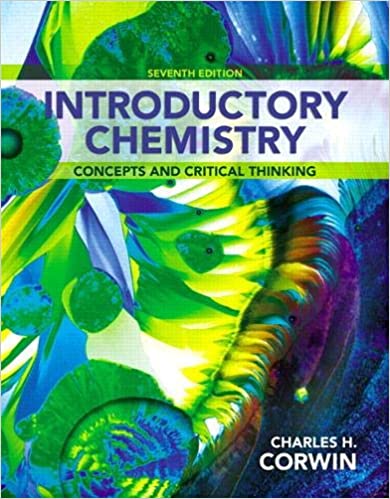

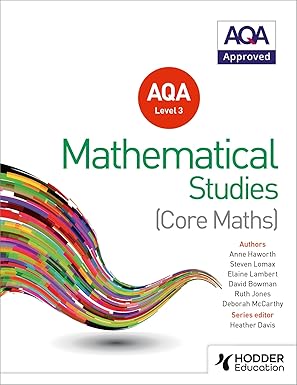
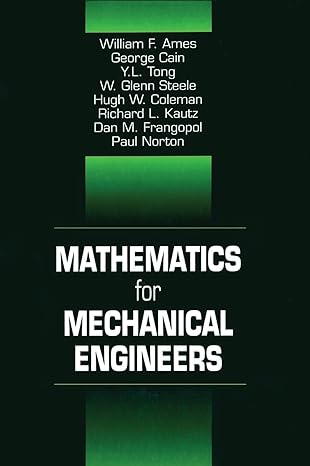

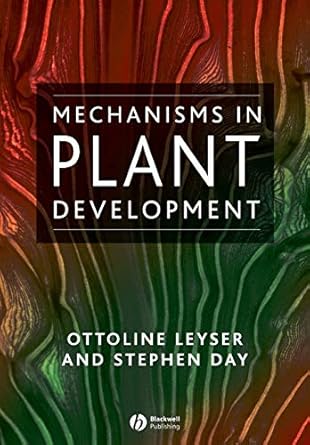

![[Soultion Manual] Statistics for Management and Economics (11th Edition) - Word [Soultion Manual] Statistics for Management and Economics (11th Edition) - Word](https://dl.libsan.ir/images/1/12/61JGRNKwfUL._SY466__66fd1fc169714.jpg)

